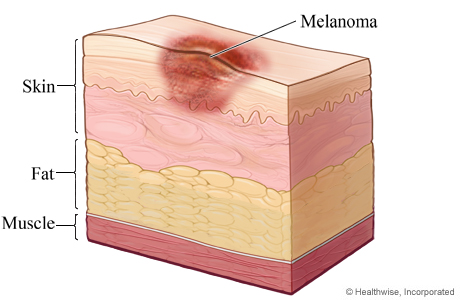Melanoma excision surgery: Overview
Surgery to remove (excise) a melanoma removes the entire melanoma along with a border (margin) of normal-appearing skin. The width of the border of normal skin removed depends on the depth of the melanoma. More tissue, usually skin and fat, is also removed from under the melanoma.
- Small excisions may be closed with stitches and heal without problems.
- Large excisions or those located on the hands, face, or feet may require a skin graft to close the wound after surgery.
The type of anesthetic used for your surgery depends on the size and location of the melanoma. Surgery on small, easily reached melanomas may require only a local anesthetic. Surgery for larger melanomas may require general anesthesia.
Why is melanoma excision surgery done?
Surgery is the most common treatment for melanoma. Sometimes lymph nodes may be removed at the same time to check them for cancer. Surgery also may be done to remove lymph nodes that have cancer or to remove tumors that may have spread to other parts of the body.
Melanoma Excision: Melanoma

Melanoma that is found early, or before it has spread, usually can be completely removed with surgery (excision).
Before excision of melanoma surgery: When to call
- You have questions or concerns.
- You don't understand how to prepare for your surgery.
- You become ill before the surgery (such as fever, flu, or a cold).
- You need to reschedule or have changed your mind about having the surgery.
©2011-2025 Healthwise, Incorporated
